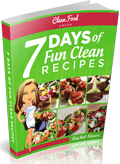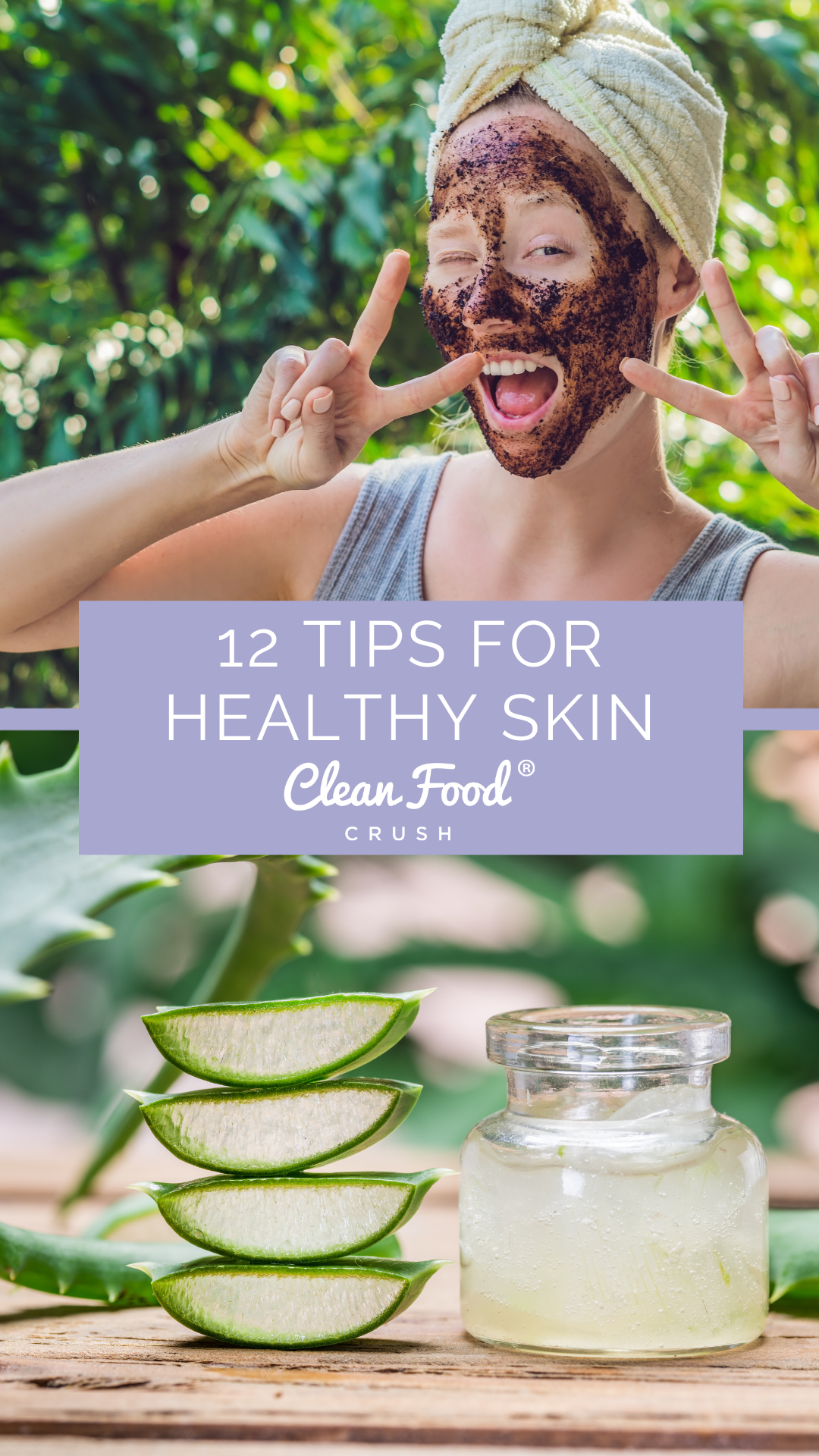

12 Tips for Keeping Your Skin Healthy
If you’re anything like me, you might get overwhelmed by the skin care industry. There are a hundred different opinions, a thousand new innovative products, and every third celebrity endorses another cream. I know the tips and tricks and DIY hacks can become suffocating, so I’ve narrowed it down to these 12 essential tips for keeping your skin happy, healthy, and glowing!
▷ 1 Know Your Skin Type
Just like weight loss, skin care is a little different for everyone. You and your best friend or sister probably don’t have super similar skin types, so you’ll have a slightly different method for taking care of that skin! The first step for proper skin care is to know your skin type!
Do you have oily or acne-prone skin? Or do you deal with dryer, mature skin? Is your skin sensitive or tougher? Understanding this and getting to know your skin type is essential. Treat it like a new friend you’ve made. Learn its language and love language. You don’t want to compromise your skin’s natural balance because of accidental ignorance, do you?
Also, remember that you can have more than one type, AND hormones can impact your skin. Skin types can change over time and through the seasons. Everyone’s skin is continually changing and adapting to surrounding environments. As you age, the levels of collagen in your skin begin to decline (bummer, we know), and your skin tends to dry out. So, be a good listener to this awesome friend you’ve made so you can be a great friend in return.
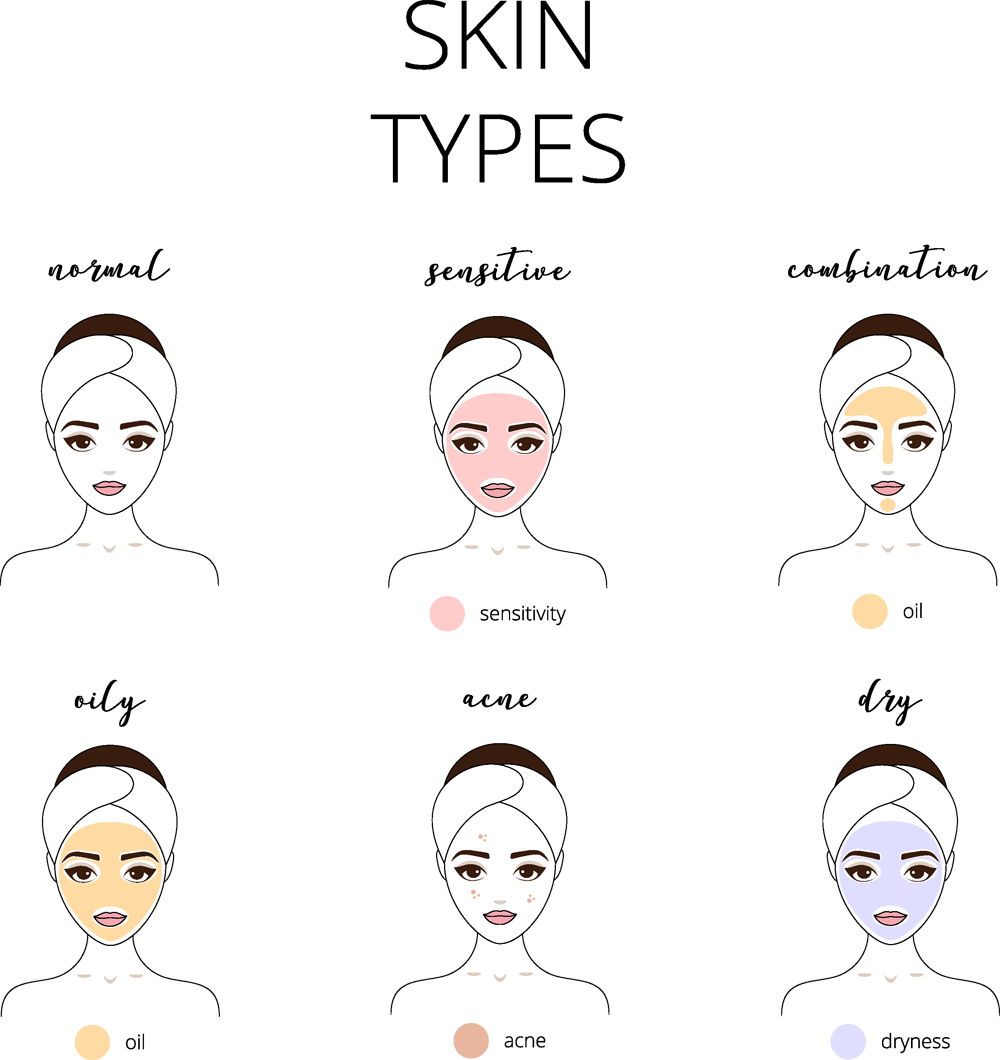
There are plenty of resources online to help you understand your skin type. To start, try this blog.
💡 PRO TIP: If you have a specific skin care concern, such as sun damage, wrinkles, or acne, the most important thing is to treat it with a corrective serum because the moisturizers and other products are going to sit on top of the skin and won’t reach the deeper layers. So, if you want to TREAT the skin, rather than just care for it, you want to go to a corrective serum instead of an “anti-aging cream.”
▷ 2 Layering Matters, I Promise!
Skin care isn’t the alphabet – the order of products matters! Going rogue and doing whatever order you want can prevent the products from being fully absorbed, which means they won’t be as effective. Generally, it’s best to apply the most lightweight formulas first, so the heavier creams aren’t keeping the skin from absorbing them. Your skin is soaking up each product like a sponge, so starting with thinner products (serums) before following up with the heavier stuff (moisturizers and oils) is essential to proper skin care. In particular, Oils have occlusive properties, which create a physical barrier between skin and the air—anything applied on top of them is done in vain. And if you’re not in a hurry (skin care deserves time), give your skin a few minutes to absorb those heavier creams before moving on.
Clean Eating is Great For Your Skin! You’ll love our recipes in the 30 Day Clean Eating Challenge!
▷ 3 Skin Care Doesn’t End with Moisturizer – Food and Drink Matters Too!
I mentioned here that your skin acting out is a sign your body is asking you to start eating clean, and that’s true! But don’t wait for a problem before altering your diet. Daily clean eating should be another step in your skin care routine.
No matter how many miracle products you slather on your face, if your diet sucks, your skin just won’t be bringing its A-game. For glowing, healthy skin, you need to be supplying your body with clean, beauty-boosting nutrients, vitamins, and minerals. And try avoiding foods like dairy, gluten, and sugar. Instead, try something like this fantastic meal.
Also, HYDRATION is KING when it comes to skin care. Be sure you’re drinking plenty of water throughout the day – it’s a skincare must. If you’re not drinking enough water, it can make your skin look dull and emphasize fine lines. In addition to drinking water, the best way to treat dehydrated skin is to use a hydrating serum every day. Look for hydraulic acid, which has 1000 times its weight in water). Picture your dehydrated cells as raisins and the serum as an injection full of water, and you’re turning that cell back into a grape.
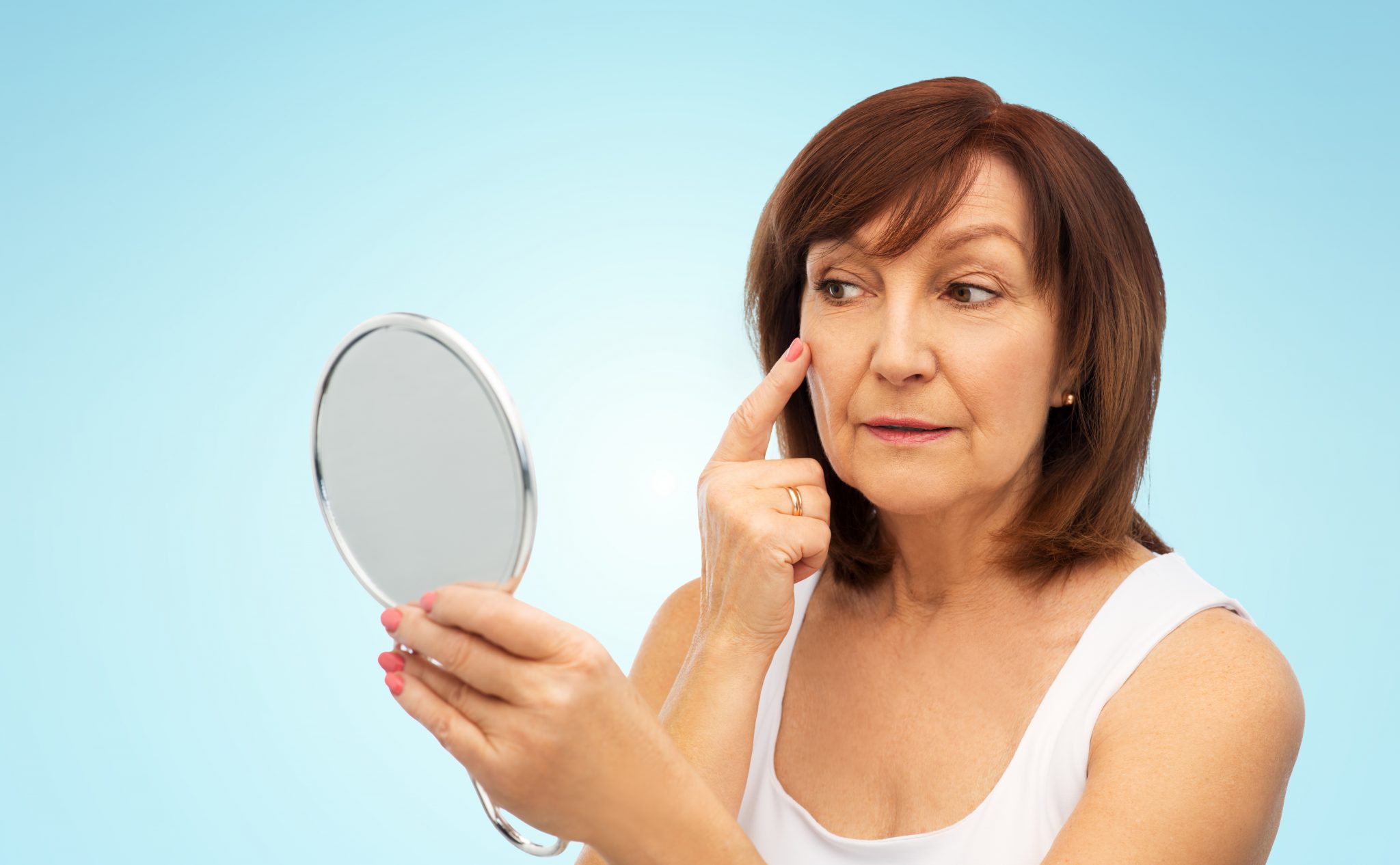
▷ 4 DON’T Squeeze that Pimple! (Translation: Stop Touching Your Face)
This one is SO hard for me, but I have to remember that everyone does it. You look in the mirror, see a pimple perfectly ready for popping, and instinctively reach up. But try to fight that instinct! Your hands are covered in bacteria most of the time (just think about all the stuff you touch). If you’re handling an already-inflamed zit or infection, you’re only adding debris to the pimple and delaying its demise. Plus, popping a pimple doesn’t do it or your skin ANY favors and can cause breakouts, leading to scarring and wrinkles.
▷ 5 More Product ≠ Better Skin
Adding a dozen steps and new miracle products isn’t always the answer. Sometimes it can be a problem. Certain products should NEVER mix, so stop hoarding those products. For example, retinol and other exfoliating ingredients—salicylic acid, glycolic acid, and benzoyl peroxide—should not be used at the same time because the skin can get dry. And applying too much moisturizer at once (you didn’t give your skin a few minutes like I said, did you?) can cause pilling and can clog pores (especially if the moisturizers aren’t non-comedogenic). Plus, it’s a total waste of product and your money, considering your skin won’t be able to absorb it all anyway.
💡 PRO TIP: Before using a new product, test it on a small patch to avoid irritation, allergic reactions, etc. The inner arm is the best place to test your skin’s response to a new formula!
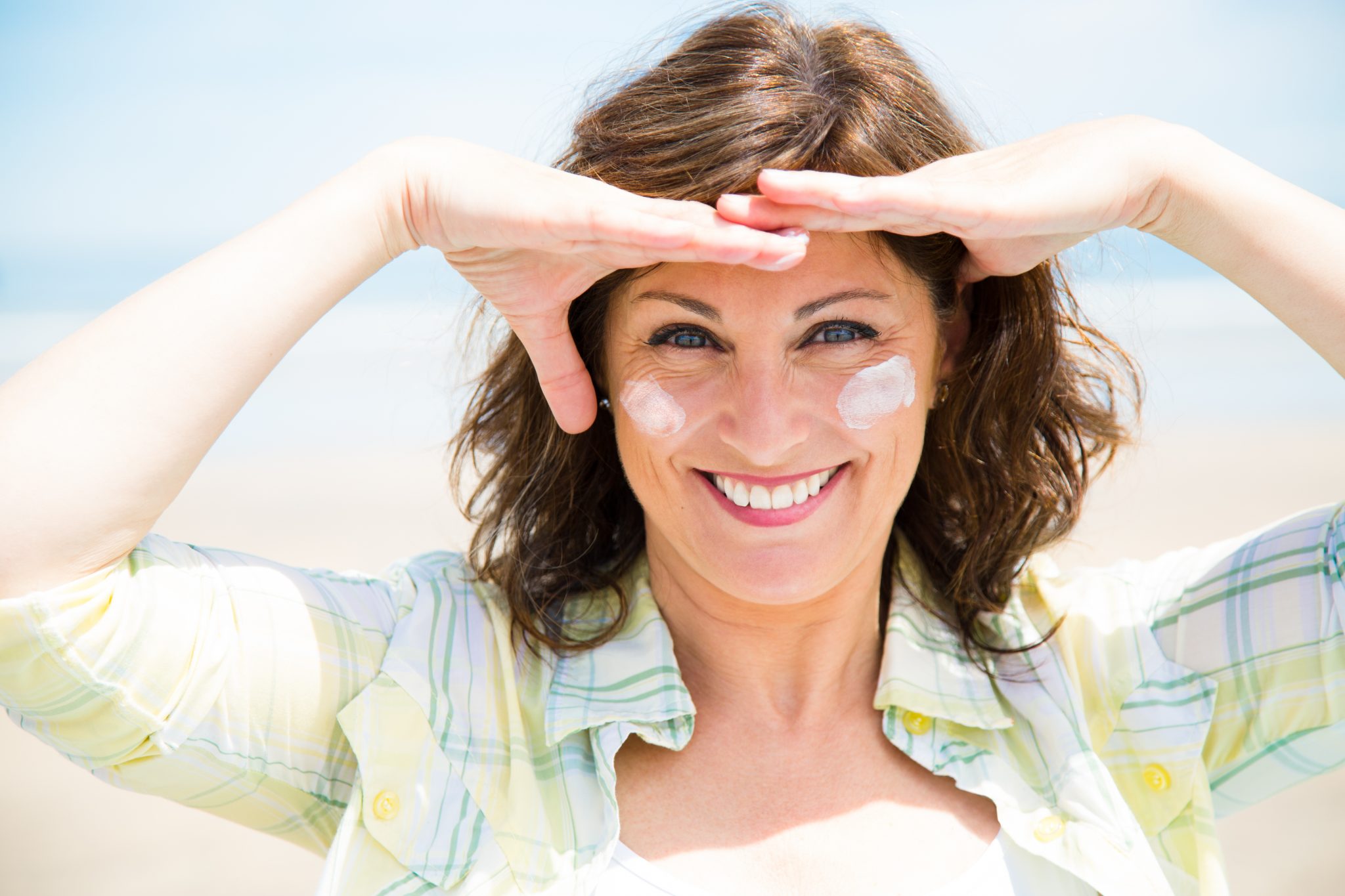
▷ 6 Never Underestimate the Power and Importance of Sunscreen
The number 1 way to protect your skin is to apply SPF every day. Skin cancer is the most common form of cancer, and it only takes 20 minutes for those sun rays to start affecting us and causing damage. So, remember that sunscreen every day, preferably SPF 30-50. Anything higher than SPF 50 is just marketing and won’t make much of a difference. Here’s a great list of sunscreens that work for your body, and this list is full of good sunscreens for your face.
Many dermatologists say that 90% of the reasons your skin ages are directly linked to sun exposure and are within your control. Those UV rays are no joke and are large contributors to fine lines, wrinkles, aging spots, and hyperpigmentation. So, even on cloudy days, protect your skin by using sunscreen (try picking one with a 5-star UVA rating). Just apply sunscreen every day, and your skin will thank you for it. It’s health, it’s integrity, and it’s essential.
💡 PRO TIP: It’s not enough to wear makeup with sunscreen because the SPF will be far too low to have enough protection.
▷ 7 Or Moisturizer, For that Matter
Hydrate, hydrate, hydrate – I’m not kidding! I know I mentioned this above with drinking water, but moisturizer is SO vital for your skin. Even if you have oily skin, you need to keep your skin hydrated; otherwise, it’ll produce more oil in an attempt to compensate. Moisturizing is twice a day activity and should be coupled with serums and/or facial mists. Look for hydrating ingredients like hyaluronic acid, glycerin, peptides, and ceramides.
You can also find a good moisturizer already in your house if you’re trying to be kinder to your wallet.
Here are some at-home moisturizers you can try:
- Vaseline is great for your lips, feet, hands, and elbows but is too thick for your face.
- Olive oil – Natural oils generally play an important role in keeping your skin hydrated. Just apply it straight to your skin and leave it overnight.
- Honey- Massage it directly on to your skin and wait for about 10 minutes before washing it off with lukewarm water.
- Aloe Vera – We all know this is great for burns, but did you know it’s also an excellent moisturizer for winters? All you need to do is to cut one leaf and squeeze all the gel out of it. Apply it on your face, let it dry for a few minutes, and then wash it off with normal water.
(Or try these creative ways to help nourish your skin and hair!)
💡 PRO TIP: Here is a comprehensive list of great moisturizers for all skin types.

▷ 8 Or Exfoliation!
Exfoliation should happen a couple of times a week since we lose about 50 million skin cells a day, and sometimes those dead cells need a little extra nudge. Be sure you’re choosing a pH-neutral product so it doesn’t dry your skin while exfoliating. Also, keep in mind that physical scrubs can be a little tricky. You want to generally avoid things with shells because they have irregular angles and can cause microtears in the skin. So, walnut shells, apricot shells, etc., are not going to be friends to your face. Take those down to your body (Your body needs exfoliation, too)! Instead, for your face, look for things with (ENVIRONMENTALLY FRIENDLY) beads that are perfectly round and will dissolve. These are super kind to your skin and won’t cause those aggravating tears. Chemical exfoliation, such as AHAs, BHAs, or an enzyme-based formula, is fantastic because instead of physically scraping those cells, it dissolves the glue that holds those cells together and allows them to fall off on their own time.
Here are some excellent exfoliators for sensitive skin.
You can also make your exfoliator that will work for more sensitive skin!
Here are four great DIY exfoliator recipes:
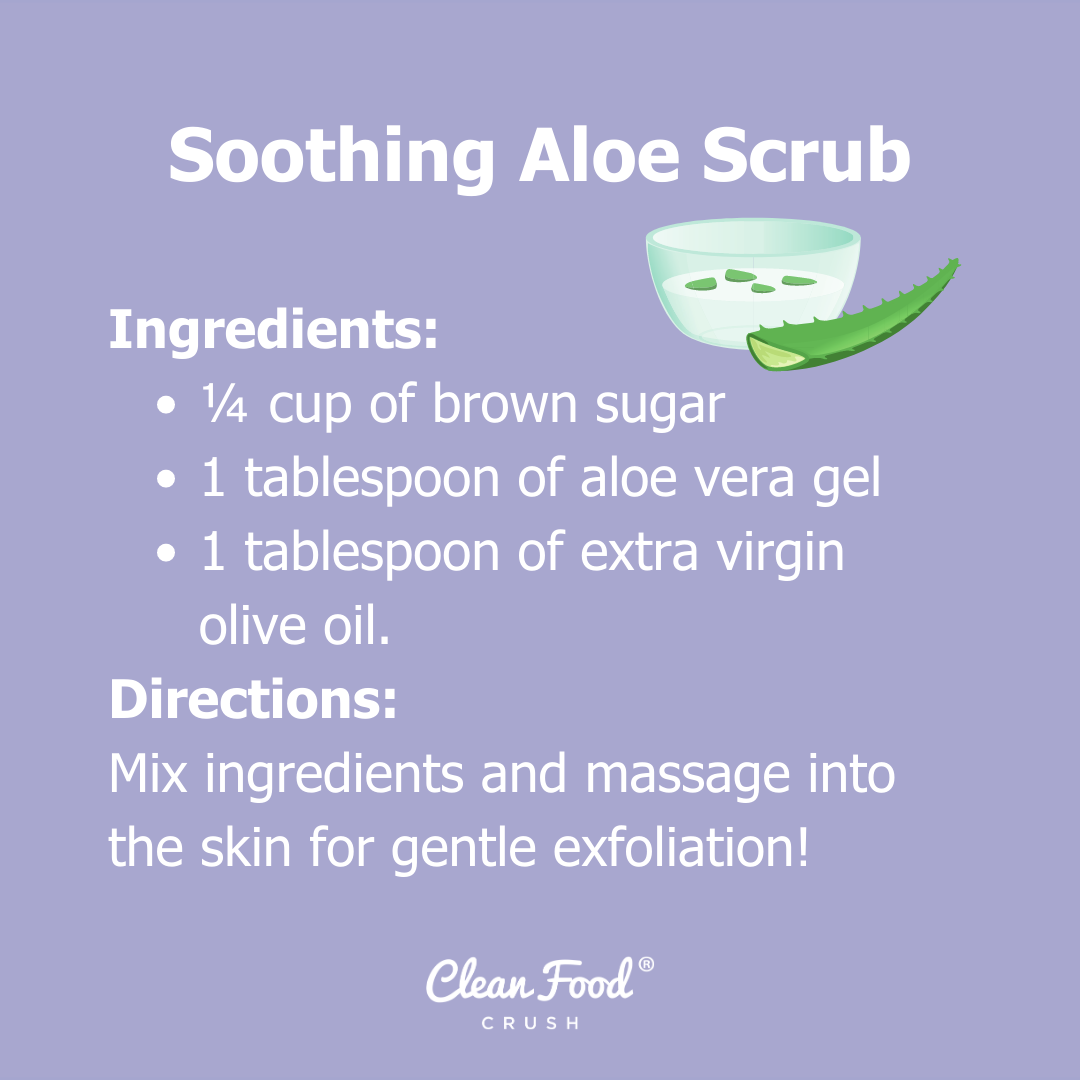
Soothing Aloe Scrub
- Directions: Mix ¼ cup of brown sugar, 1 tablespoon of aloe vera gel, and 1 tablespoon of extra virgin olive oil. Massage into the skin for gentle exfoliation!
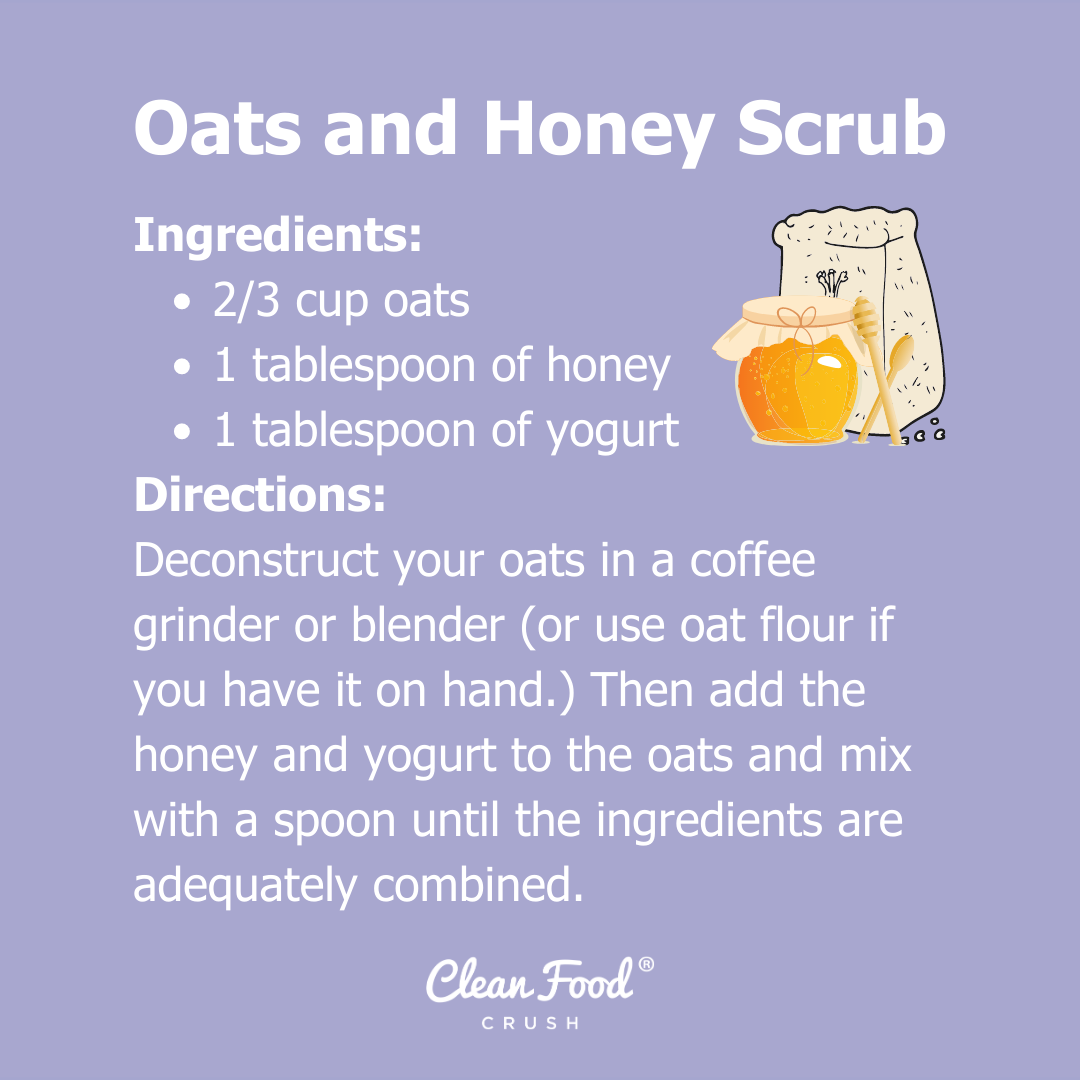
Oats and Honey Scrub
- Directions: You’ll need 2/3 cup oats, 1 tablespoon of honey, and 1 tablespoon of yogurt. Deconstruct your oats in a coffee grinder or blender (or use oat flour if you have it on hand.) Then add the honey and yogurt to the oats and mix with a spoon until the ingredients are adequately combined. Then, yep, you know the drill. Start slathering that scrub onto your face.

Coffee Exfoliating Scrub
- Ingredients: 1 tablespoon of finely ground coffee, 1 spoonful of glycerin (or try shea butter, jojoba oil, cocoa butter, or avocado oil), 1 tablespoon of bentonite or white clay, 1 teaspoon of sugar, and you can add a splash of lemon juice if you’d like, but be careful if your skin is EXTRA sensitive!
- Directions: Mix all of your ingredients in a bowl and then gently lather onto your face.
- An extra benefit of this scrub is the natural caffeine, which will give your skin a boost. Not a fan of coffee? No worries. You can use tea instead!
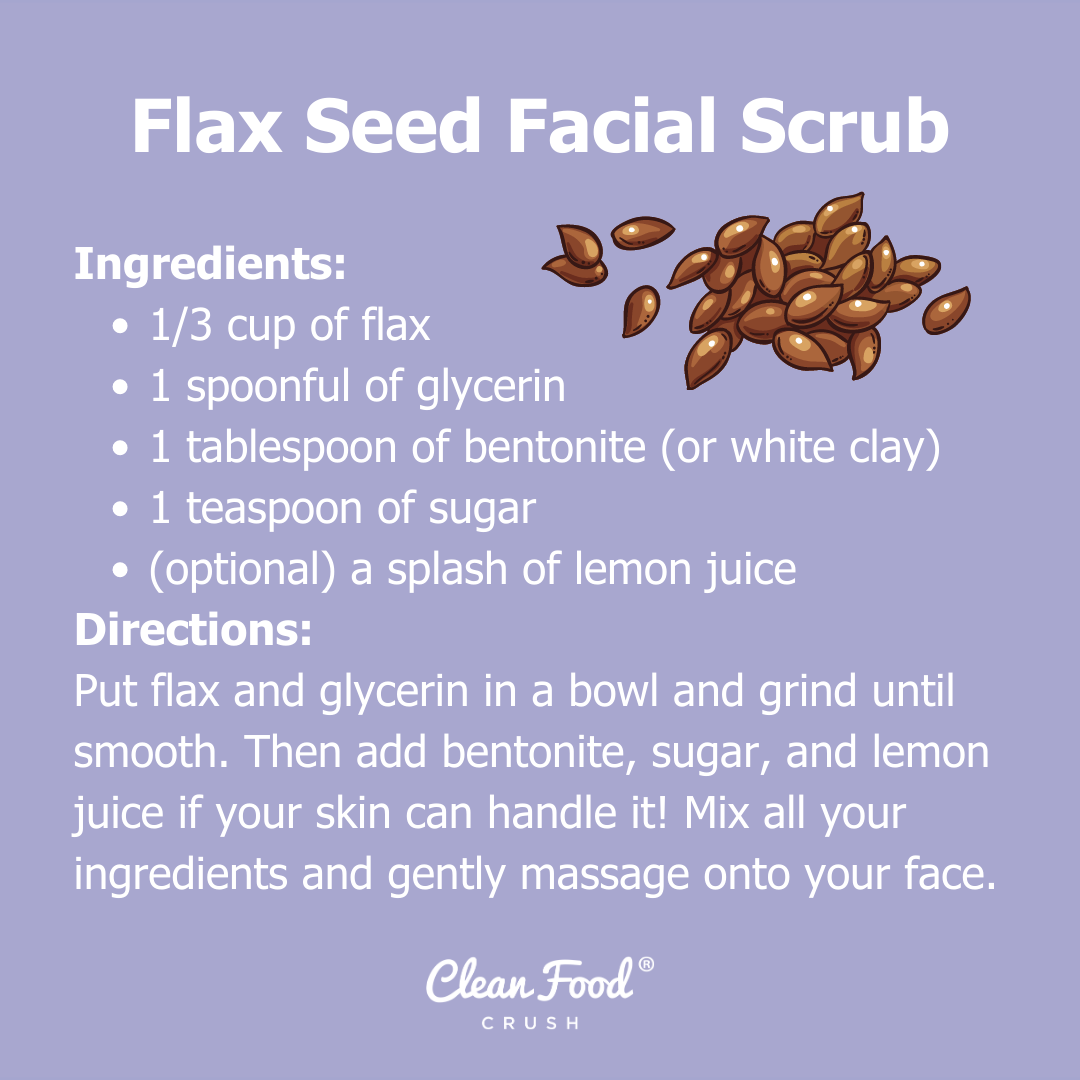
Flax Seed Facial Scrub
- Directions: Put about 1/3 cup of flax and a spoonful of glycerin (or try shea butter, jojoba oil, cocoa butter, or avocado oil) in a bowl and then grind until smooth. Then add 1 tablespoon of white clay, 1 teaspoon of sugar, and a splash of lemon juice if your skin can handle it! Mix all your ingredients and follow by gently swiping onto your face.
- Flax seeds have many anti-inflammatory and antioxidant benefits, which will help reduce the look of fine lines and wrinkles. If you’re feeling it, you can also swap out the flax with oats for some extra moisturizing action.
▷ 9 VITAMINS, VITAMINS, VITAMINS!
A balanced diet is important, but there’s more than one way to give your skin vitamins. You can put those directly on your face with topical antioxidants, which are serums and creams that contain ingredients nourishing to the skin. The best time to apply them is directly after cleansing so that your skin can soak them in (remember, layering!)
Vitamin C is one of the most potent antioxidants on the shelves, which helps protect your skin from environmental stressors that can accelerate aging. Vitamin C also works overtime to brighten your skin and works in tandem with your SPF to improve its sun protecting powers. Also, our hormones can affect the skin, so keep that in mind when choosing your vitamins. For instance, when your female hormones are low, it’s crucial to load up on vitamin c and zinc to up your immune system and hydrate your skin.
▷ 10 Don’t Ignore Your Neck!
Just because your neck and décolletage (the fancy French term for the delicate area around your clavicle and above the breasts) aren’t technically on your face doesn’t mean they don’t deserve some attention. Many experts consider the neck to be one skin unit with the face because the décolletage is susceptible to the same skin damage as the face. It is common to neglect the neck area but try not to because it IS a skin care mistake (and is one of the most prominent signs of someone’s age). So, carry that skin care routine down a few inches to your neck. (But massage in upward motions so you don’t begin to pull the skin downward.)

▷ 11 Remember Spring Cleaning!
Translation: Products that go on your face deserve cleaning too! Try to remember the last time you cleaned your makeup brushes. If you can’t, go ahead and stop reading and rush to your bathroom to clean them! Many doctors say you should clean your concealer and foundation brushes once a week, and the brushes are used around your eyes twice a month. But, the general rule of thumb is to clean your brushes once a month. If nothing else, pick a day a month where you clean ALL the brushes.
Here’s how: Put a drop of a mild shampoo into the palm of your hand. Wet the bristles with lukewarm water. Then, massage the bristles into your palm to distribute the shampoo into the brush. Avoid getting the metal part of the brush wet/or the brush hair base because the glue could soften, and the bristles could fall out. (We want to avoid this, so you’re not buying more brushes than you need to.) Rinse the shampoo out and squeeze out the water with a towel. Lay the brushes on their side with the bristles hanging off the edge of the counter to dry.
ALSO, while you’re doing this spring cleaning, go ahead and throw out those expired products. I KNOW it’s a bummer, and you want to hang onto those beloved products, but please don’t (especially if you use them often). Using expired products can cause infections and irritations. Plus, they just won’t work as well. It’s worth the pain of opening your wallet to get fresh new ingredients, I promise.

▷ 12 Believe it or Not, There IS a Smarter Way to Sleep.
First, just go to sleep. That is VERY important for skin health (not to mention a lot of other problems). But, after you’ve perfected that sleep schedule, it’s time to become a pro sleeper. (Which is a thing.)
It’s not all about just getting eight full hours. You also need to wash your sheets and pillowcases regularly. If you can, splurge a little and get pillowcases that are 100% silk or satin on both sides because it helps protect your skin even if you like to flip your pillow over during the night. This material is also best because it glides smoothly and can help prevent wrinkles and is kind to your skin. It’s also better for your hair and helps avoid tangles and breakage. Better hair and skin while you sleep? Yes, please. (Splurge = worth it)
Also, pay attention to your nighttime skin care routine. If you wear SPF (you should!) or makeup, be sure to double cleanse at night. That first wash is to get the SPF and Makeup off, and the second is to cleanse your skin correctly, so everything you use after penetrates and goes where it needs to go instead of getting stuck on leftover makeup.
If you want to try this tip tonight but don’t have the necessary ingredients, try making a DIY night-time face mask! The primary purpose of overnight masks is to create a seal that locks in moisture along with your other skincare products. Here are some face masks you can try making today:

Coconut Oil Face Mask
GREAT for dry and irritated skin, but avoid if you have oily or acne-prone skin.
- Directions: Mix a teaspoon of extra virgin coconut oil or cold-pressed coconut oil in your favorite night cream. Massage it on your face and wash off the next morning.
- Note: You can also use coconut oil directly on your face without mixing it in creams.

Cucumber Face Mask
Cucumber isn’t just a superfood. It’s also great for your skin. Cucumber juice has a cooling effect on the skin. It not only boosts skin hydration levels but also reduces inflammation, soothes sunburn, improves the appearance of wrinkles, and brightens your skin.
- Directions: Extract half a cucumber’s juice and apply it with a cotton ball on your face.
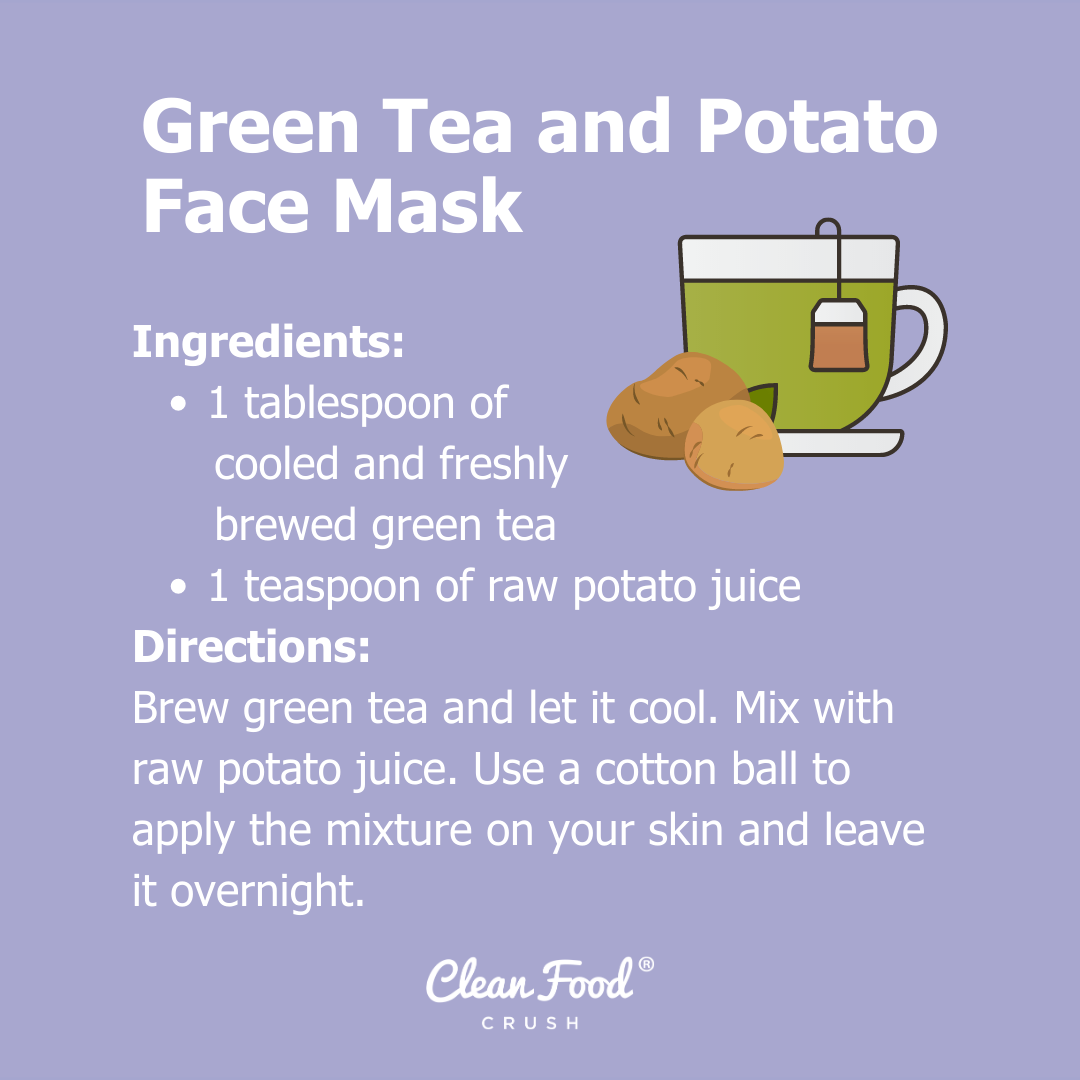
Green Tea and Potato Face Mask
Green tea contains polyphenols, and topical green tea can help prevent inflammatory responses triggered by UV exposure and suppress oxidative stress. Potato juice, on the other hand, is good for oily skin. It can help prevent skin rashes, reduce acne blemishes, and nourish the skin.
- Directions: Take a tablespoon of freshly brewed (and cooled) green tea and mix a teaspoon of raw potato juice with it. Use a cotton ball to apply the mixture on your skin and leave it overnight.
BONUS TIP: When it’s warmer outside, stow all your skincare in the fridge.
Sounds weird, right? I agree. BUT I’m convinced this does help. Colder temperature deflates puffiness AND can wake you up in the morning, so try storing that eye cream in the fridge. Nail polish can benefit from being in the refrigerator because it doesn’t thicken as quickly if it’s kept cool. And face masks are even more relaxing when chilled. During the summer, there’s probably nothing more refreshing than piling on a tub of a thick minty body lotion fresh out the fridge, especially after a great workout.
Try it once and let me know what you think of this bonus tip!













